.اقرأ المقالة باللغة العربية هنا
I am often confronted by the question “Are you Iranian or Persian, and what’s the difference?” and it has become something of a bonding ritual among Iranians I know to discuss the various ways in which we answer that question. For many years, I answered that there existed little difference between the two besides a political connotation, “Persian” being the adjective of choice for those who avoided any connection to the Islamic Republic. Noted Iranian comedian Maz Jobrani, similarly, points to the historically alluring and exotic sound of “Persian,” as well as its connection to [Persian] cats and rugs, in order to explain why many people prefer to use this word instead of “Iranian.”
This worked pretty well for me until the day I met a young Iranian-American of mixed Azeri-Bakhtiari Iranian heritage. While flippantly describing us jointly as “Persian,” I was pointedly informed that besides the language she spoke and a mainstream Iranian culture we shared, there was not much “Persian” about her. I had been describing myself and other Iranian-Americans I knew as Persian not merely because it was convenient, but in fact because we were Iranians of Persian ethnicity. And this was the day I found out that Iran is not, in fact, a wholly “Persian” country, contrary to popular belief and the continued insistence of many Iranians.
In fact, Persians- here defined as those whose mother tongue is Persian and identify themselves as such- make up about half (though some estimates range as high as 60%), the rest being composed of Azeris, Arabs, Balochis, Kurds, Gilanis, Mazanderanis, Loris, Qashqais, Bakhtiaris, Armenians and a whole host of other ethnic groups who collectively identify as Iranians and speak the Persian language but but whose ethnic identity is other than Persian. In addition to these ethnic and linguistic minorities, there exists a host of religious minorities- Sunni Muslims, Christians, Jews, Bahais, Zoroastrians, etc- who also fit across the ethnic mosaic described above, some identifying as Persians and others not.
On some level, I had always known Iran was not a “Persian” country. I grew up hearing jokes about “Turks”– meaning Iranians of Azeri extraction, sometimes called “Azeri Turks” because of their cultural and linguistic affinities to Turkey- and noticed that I could not always understand languages I heard spoken on Tehran streets. And yet, despite this, every journalist and every Iranian I knew insisted Iranians were Persians, in the process denying the existence of half of Iran’s population.
The injustice and absurdity of this denial finds its roots not just in ignorance but in the prevalent and virulent brand Persian racism rooted in mid-20th century Iranian nationalism that sought to wipe out our country’s ethnic diversity.The development of nation states around the world over the last two centuries has been accompanied by violent attempts to overlook or erase national diversity within the boundaries of the state. The natural diversity of human culture has been manipulated and condemned by state leaders and by politicians seeking re-election, narrowing the limits of belonging and attempting to draw lines to distinguish those who are a part of “us” and those who are “not.”
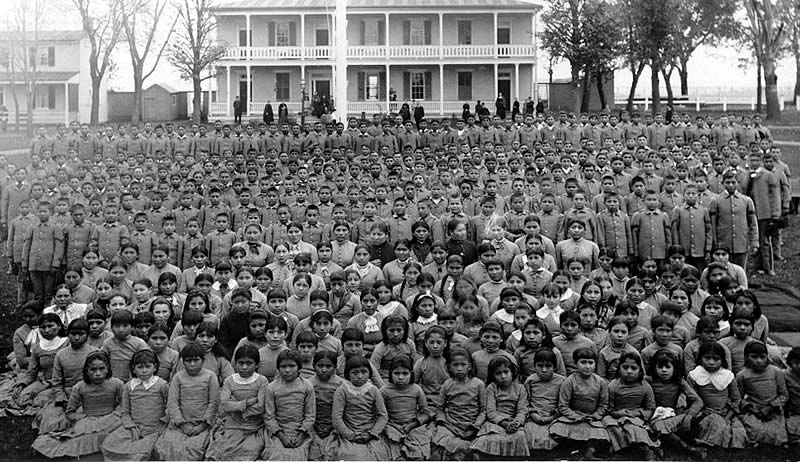
In countries like France this process has involved the development of a school system that brutally forced children with linguistic and cultural backgrounds other than proper [Parisian] French to assimilate and forget their languages or dialects; often, this was achieved by beating students who spoke their mother tongue at school and teaching them that it was worthless (history of French linguistic nationalism here). In places like Germany, meanwhile, territorial expansion into areas inhabited by German-speakers combined with physical extermination was used to rid the nation of religious minorities (like Jews and Catholics) and cultural minorities (like the Roma and Sinti) who seemed impossible to assimilate while uniting geographically disparate ethnic German communities (overview of those policies here).
The creation of nation states outside of Europe, a process facilitated through both colonialism as well as resistance to it, spread the development of exclusivist national projects globally. Iran has been no stranger to this process; indeed, the development of an Iranian national identity, under both the Pahlavi regime and the Islamic Republic, has involved controlling and marginalizing those who do not fit correctly within the normative construction of what it is to be “Iranian.”
The Pahlavi regime’s definition of Iranianness finds its roots in the construction of an exclusivist Iranian identity in the 1920’s and 30’s. The increasingly centralized and authoritarian state of Reza Shah Pahlavi sought to eliminate linguistic and cultural diversity by crafting a narrative of Persian Iranian history that went back nearly 2500 years that was united by the determination of the Persian people. This was of course an artificial history, just as nationalisms always are- both the Qajar and Safavid dynasties preceding the Pahlavi were Azeri Turkish, for example, and historically it was not ethnicity but ethnically neutral imperialism and the use of Persian language as a lingua franca that had brought together the incredibly diverse peoples populating the lands under control of the “Persian Empire.”
Reza Shah took his cue from the nationalist ideological currents sweeping Europe and Turkey, where colonial scholarship had long equated language with ethnicity as part of the efforts to understand the success of certain nation-states as compared to others. Aryanism was one of the most influential of these ideologies, and it identified the Indo-European language tree (which includes Sanskrit, Persian, and most European languages) as proof of a migration of an imagined Aryan nation out of India, through Persia, and into Europe. Aryanism was highly convenient for Europeans because it made sense of the Indian and Persian civilizations they were encountering through their colonial enterprises.
According to this theory, Europe represented the pinnacle of the racial hierarchy while Indian and Persian civilizations were mere steps on the way to contemporary greatness. Additionally, it distanced Europeans from the Semitic languages of the Jews and Arabs, offering a pseudo-scientific rationale for both racialist anti-Semitism and Orientalism.
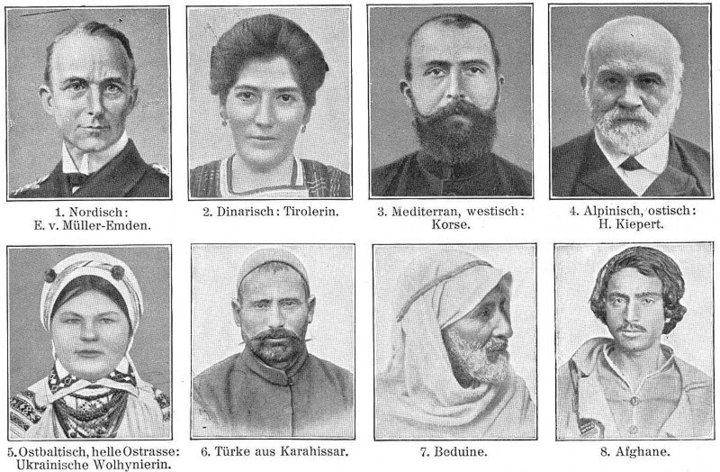
Pleased to be offered a position just below his European masters on the ladder of civilizations, Reza Shah declared Iran a nation of “Aryans.” He subsequently banned the use of languages other than Persian in schools and written media more broadly. We all became Persian, and other languages became mere dialects not suitable for official use (especially non-Indo European tongues like Azeri Turkish and Semitic Arabic, but also Indo-European Kurdish).
On one hand, this form of nationalism allowed religious minorities that consider themselves Persians- like most Jews, Bahais, and atheists- to be a part of normative Iranianness, because being Iranian was defined by how Persian you are and thus offered a secular national identity for those 10% of Iranians who were not Shia to be a part of. On the other hand, however, this came at the expense of the 49% of Iranians who now had to either lose their heritage or exist silently at the margins.
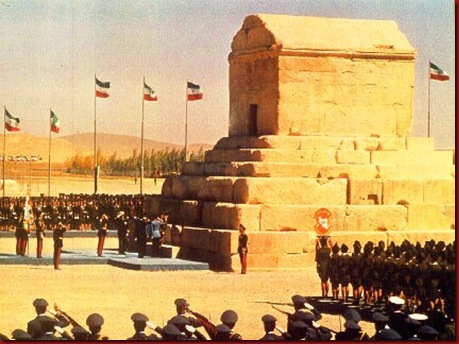
Although his co-option of ancient Persian and Zoroastrian symbols in order to describe his rule was anachronistic and repulsive to some Iranians- many of whom scoffed at his references to Cyrus the Great and divine rule by using terms like, “universal ruler,” Shahanshah (“King of Kings”), and Aryamehr, (“light of the Aryans”) to describe himself- most Iranians eventually bought these racialist myths of Iranian-ness and the narrative became naturalized.
Even today it’s not uncommon to hear Iranians describe themselves as Aryans, usually when emphasizing their non-Arabness to white people and linking themselves to Europe (“Really, we are Aryans, our language is more similar to German than Arabic!”). Of course, these attempts are often received with awkward horror, the term “Aryan” having fallen out of usage following Adolf Hitler’s unfortunate decision to wholeheartedly adopt the Aryan theory as a rationale for genocide.
The Revolution of 1979 dramatically shifted these meanings of Iranianness. Secular Persianness was replaced with religious Shianess; in the course of just a few years, the official way to be Iranian was by being an observant Shia Muslim and thus lost a great deal of its association with ethnic Persianness.
In contrast to Pahlavi Iranianness which excluded non-Persians, under the Islamic Republic all Shia Muslims regardless of ethnicity could ostensibly be normative Iranian citizens.
However, religious minorities- including those who considered themselves Persian, like most Jews and Bahais- were no longer part of mainstream Iranianness, and secular or non-observant people of Shia Muslim background found themselves marginalized as well.
The Islamic Republic dealt with these in different ways: while seculars were to be forcibly assimilated as much as possible, Jews (and other non-Persian religious minorities, like Christians and Sunni Muslims) were ideally to be respected as citizens with equal rights but different status.
President Ahmedinejad speaking Azeri to a crowd of Azeri Iranian supporters
Languages other than Persian rapidly entered the public sphere and print use of other languages was legalized. Despite this, the ethno-supremacist version of Persian-Iranian nationalism did not disappear overnight; even as ethnic minorities like Mir Hossein Mousavi (Azeri), Mehdi Karroubi (Lori), and Ayatollah Khamenei (Azeri) reached top political and religious posts, the war against (mostly Arab) Iraq ensured the longevity of Persian nationalism in the face of a virulently anti-Persian foe.
Persian ethnocentrism has remained an influential part of public discourse within Iran, and many Iranians outside of Iran as well cling to notions of Aryanism and Persianism deeply antithetical to an inclusive, egalitarian democratic future. In popular discourse these representations are rife, as the youtube videos above provide evidence of. Alireza Asgharzadeh’s book, “Iran and the Challenge of Diversity: Islamic Fundamentalism, Aryanist Racism, and Democratic Struggles,” tackles this discourse in depth, albeit with numerous methodological flaws (a shorter interview of his can be found here, while an extensive rebuttal to a number of his arguments and sources can be found here).
The 2006 riots in Iranian Azerbaijan highlighted the persistence of this racist discourse- and its linguistic roots- in public discourse. In May of that year a satirical cartoon was published depicted a boy speaking to a cockroach in Persian as the cockroach responded “What?” in Azeri.
An accompanying article pointed to the inability of cockroaches to understand reason and to the incomprehensibility and silliness of their own language, a provocation that led to riots across the majority-Azeri areas of Iran and left four dead. The cartoonist, an ethnic Azeri himself, was subsequently arrested and the newspaper shut down, but it can be surmised from the timing that the state’s reaction was to prevent more rioting, not tackle the prejudice at the heart of the issue.
In our struggle as Iranians both in Iran and the diaspora to develop a national identity that is religiously inclusive, we must not simultaneously build one that is ethnically and linguistically exclusive. Crafting an inclusive national identity by recognizing the historical marginalization and silencing of Iran’s minority languages must be a crucial part of our national struggle for freedom and equality.
Indeed, in a world full of exclusivist nation states and ethnic cleansings with the goal of “purifying” and homogenizing populations, Iran’s diversity stands out. We are a nation united not by ethnicity nor religion but by history and a shared, rich, diverse national culture.
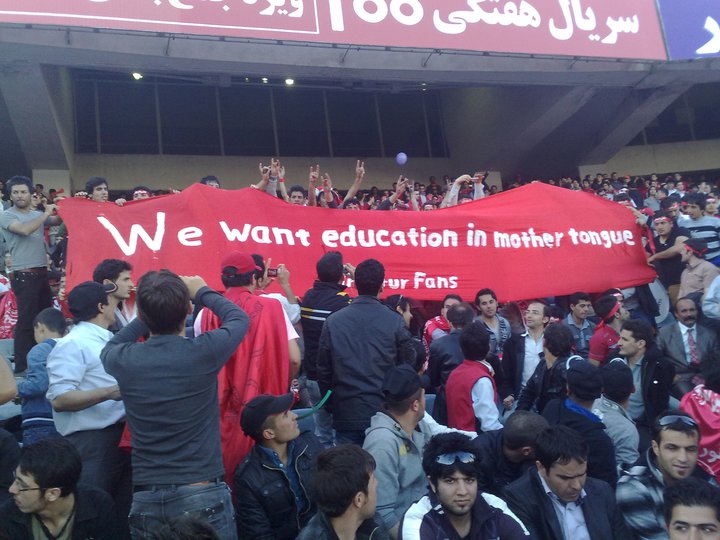


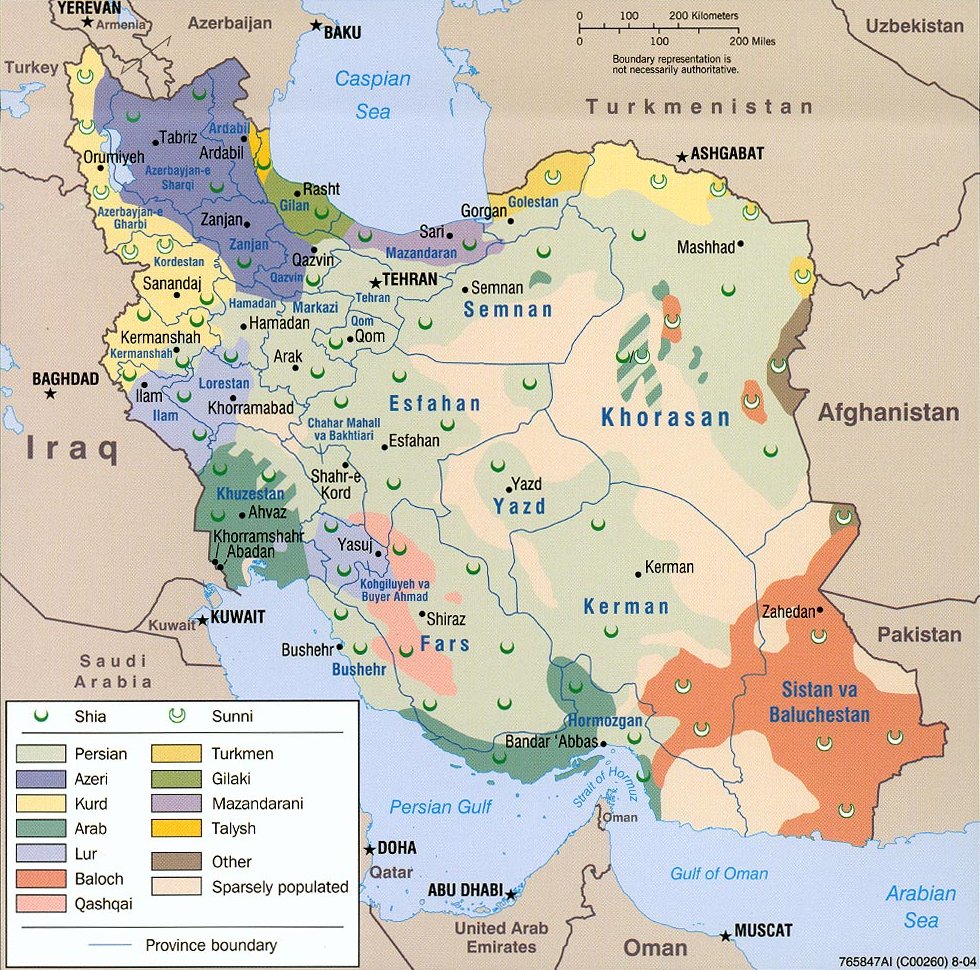
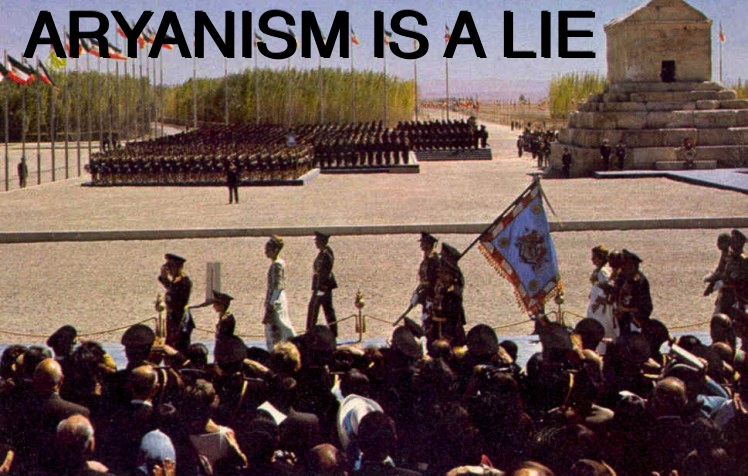
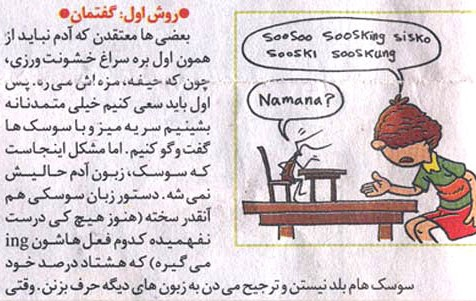










52 comments
This article is a real breath of fresh air. I am looking forward to the sequel.
The above article is a poor rehash on mr maziar ashrafian bonab’s ideologically driven theory. Mr maziar asharfian bonab’s theory is badly outdated and merely repeats the discredited views made by Dr Wells back in 2001. Dr Wells fashioned a a highly controversial and hereto unprecedented theory concerning the non-Aryan or non ancient Indo-Iranian origins of the present day Iranian populations based on extremely limited population samples. Dr Wells views has since fallen into disrepute. Even at the time Wells fabricated his theory, it was contradicted by genetic studies conducted by Cavalli-Sforza, Wells’ own teacher, who has revealed that present day Iranians have weak correlation with Near Eastern groups, and are closer to surrounding Indo-Europeans speaking populations.
But mr maziar ashrafian bonab is trying to advance/resurrect the defunct theories of dr wells. The theory basically says that the present day Iranians are merely Middle Easterners (related to ancient Middle Eastern groups like the Akkadians, Assyrians, Babylonians, Amorites, etc. and other Semites of Mesopotamia) who borrowed their language from the unrelated ancient Indo-Iranians or ancient Aryans.
Like Dr Wells before him, mr maziar ashrafian bonab’s ideologically driven theory conveniently ignores the preponderance of R1a genetic marker among present day Iranian populations and/or the overall autosomal DNA of the Iranians. (The R1a or the ancient Iranian-Aryan distinct genetic marker is regularly found at frequencies of greater than 15% across Iran, and reaches frequencies of 35% or much higher in the eastern parts of the country. The highest R1a1 frequencies are detected in the Central Asian populations of Ishkashemi Tajiks (68%) and Pamiri Tajiks (64%), both groups being remnants of the original Eastern Iranian population of the region. Apart from these two groups, high frequencies of R1a1 are also found in Pashtuns (44.8%) and eastern parts of the Iranian Highlands up to frequencies of 35%, similar to Northern India.)
Furthermore, linguistic and archeological evidence proves that the Aryans of ancient Iran shared almost nothing in common with the Semites, neither in language nor culture. Infact the flow of culture that began Mesopotamian civilization was from the regions near the Zagros to the Near East, intruding into the aboriginal cultures of those regions. So in the past, Middle Easterners and ancient Iranians were very different people.
In addition, modern populations of the southern Middle East (especially Arabic speaking ones) have a higher frequency of the haplogroup J1, whereas the great majority of Haplogroup J representatives among the populations of the Northern Middle East, southern Europe, Iran and India belong to the subclade J2a. Haplogroup J2a-M410 in India is largely confined to the upper castes with little occurrence in the middle and lower castes and is completely absent from south Indian tribes and middle and lower castes.
This suggests that, if the occurrence of Haplogroup J2a among modern populations of southern Europe, Central Asia, and South Asia does reflect Neolithic demic diffusion from the Middle East, the source population is more likely to have originated from Anatolia, the Levant or northern Mesopotamia than from regions further south into the arabian peninsula and southern Iraq.
In other words, J2a marker which is found in an average frequency of 25% in Iran would be mainly an Indo-Ayran marker, i.e. those Indo-European people of western Asia. This also works for southern Europeans including Greeks and Italian people.
Compared to the Indo-Aryan J2a marker associated with the ancient Hittites, Mitanni and other Indo-European Anatolian populations, the occurrence of the Semite/South Mesopotamian genetic marker J1 is 40.1% in saudi arabia, 58.3% in Qatar, 72.6% in Yemen, 38.0% in Oman, 34.8% in UAE, 33.3% in Kuwait and only between 9% to 11% in Iran.
However, mr ashrafian bonab claims in essence that the present day Iranians descent from the South Mesopotamian populations and share the same ancestry with the marsh shia arabs of Iraq. It should be added that some later shia hadiths put ajam (a derogatory arab term for Iranians) and the people of kufah in southern Iraq, who refused to help the 3rd shia Martyred Imam Hussein, at the same ancestry.
Remarkably, mr maziar ashrafian bonab also claims that almost ALL the seyyeds in Iran or those who claim descent from the Prophet of Islam seem to share the same south Mesopotamian distinct genetic marker of J1c3d. Over 6 million ppl in Iran alone claim the seyyed ancestry.
Yet, genetic studies in Northern India and other non arab lands has shown that only 11% of the supposed seyyeds share southern Mesopotamian/Semite J1c3d genetic marker. Another 18 percent share the genetic markers J2 which is associated with Indo-Europeans ancient Hittites in Northern Mesopotamia. And 90 percent of those who claim seyyed descent in India and non arab lands share the same genetic markers as the rest of the native populations of their respective country.
Present day West Iranians are genetically closest to the Kurds, and show great genetic similarity to the Armenian and other populations of the Caucasus Mountains.
The genetic markers of present day East Iranians is very similar to that of North Indians and the Brahmans in general, belonging in equal numbers to genetic markers R1a, J2 and G.
To claim that Iranians are a mutated form of arab populations (ajam) is unsubstantiated, ideological rhetoric and is wishful thinking on the part of individuals and groups with a clear ideological agenda.
Fundamentalists are bent on proving through distortion of historical facts, manipulation of scientific data and a host of other unwholesome tactics that the ancient Aryan/Iranian identity is only a myth/lie and even if true was insignificant and marginal at best.
These ideological warriors have found a valuable ally in the politically correct and decadent attitudes of the West toward ancient Indo-European studies.
According to these ideological warriors, Iranian identity begins with shia islam, and all science, culture and civilization and even national identity came to Airan/Iran only after the arab bedouin invasion. To them, Iranians are ajam or a mutated version of arab people, and pre-islamic Iranian history, culture, nationhood and ancient beliefs are mostly a myth and are insignificant at best.
Accordingly; anything and everything prior to the arab invasion falls within the category of dark ages and superstition. The works of mr maziar ashrafian bonab has only given a scientific legitimacy to such unauthentic hadiths and long held erroneous and wishful beliefs.
(During his youth, mr maziar ashrafian bonab shared the Islamic revolutionary ideals of the Basiji movement and the basiji ideals of shia Islam, country and people. The following posted video by mr maziar ashrafian bonab shows clearly his ideological inclinations. (https://www.youtube.com/watch?v=G5eQS3D4bbU.)
Another fellow thinker of mr maziar ashrafian bonab; mr reza zia-ebrahimi asks if the ancient Indo-European heritage of Iranians does even matter??? Well, the real question is, if faith in the universal islamic religion equates arabization or obliteration of any identity other than the arab/islamic identity???
Going back to mr reza zia-ebrahimi rhetorical question; Yes every identity matters. The same way that the Palestinian identity matters, the kurdish and Iranian identity matter as well. The possible hebrew lineage of present day Palestinian Arabs matter. The Armenian ancestry of many present day Turks matter. The ancient Indo-European ancestry and identity of present day Iranians and Kurds matter too.
Fact is that shia islam has a rich and undeniable Zoroastrian heritage and background. That heritage ought to be celebrated and not shunned, denied or obliterated by the shia moslems.
Happily, many present day Iranians are PROUDLY rediscovering their Aryan Zoroastrian past and see NO conflict between their ancient heritage/religion and their current shia faith. This includes many brave members of the Islamic revolutionary guard and families and children of shia marja or sources of emulation. The tide of history can not be undone.
Ardeshir’s reply (with its non-sequiturs, half-truths and assumptions) pretty much demonstrates the validity of Alex Shams’ article.
As cvemuri2 ironically demonstrates, his name-calling and Ad Hominem pseudo-argumentation, non-truth, pointless distractionary fallacy and complete lack of a developed, rational or even mildly-reasoned argument are typical of the scientifically-illiterate severe denial-afflicted and poetic fantasy projectionists. What’s more comical is that the mentality and mindlessly contrarian, slanderous rhetoric invalidate both his own vague assertion and the poorly developed, hollow claims of the article he seems eager to validate in negation to Ardeshir’s accurate and well-founded reply that anthropologists, linguists, genealogists and historians the world over agree on.
Thank You. In fact nowadays the most prominent sources in genetics and anthropology and archaeology are suggesting teh PIE (Proto-Indo-European) Homeland to be the nexus between NW IRAN , Eastern Turkey and the Southern Caucasus. Both geneticist David Reich AND the Max Plank institute have independently come forward with this theory in light of multiple lines of evidence. The big elephant in the room among Storm Fronters and those deluded by Steppe theorists, is that the reality is that there was a south to north influence from the Iranian plateau. Ancient skeletons of the the Steppe, (and eventually central Europe), and India, show strong signatures of Iranian influence as reflected by large-scale SNP studies. This is confirmed nicely by Haplogroup studies (R1a /R1b/IJ linker). Indeed, Iranians aren’t only Aryan, but their ancestors were directly in the zone of progenitors of the earliest Aryans (Indo-Europeans)
It is very difficult to be religiously inclusive when in these days and times religions are not upholding the moral and ethical exclusivity that their good books universally demands. Secularism provides paints society with a very broad brush, and is therefore very inclusive. This is good in some ways but very bad in other ways. It is good in that it provides a compatible social/political matrix for humans to develop on what ever level they are on. It is bad in that being so inclusive has also given license to the most virulent and toxic social/political/economic/ human viciousness and catapulted them on to center stage of the main stream. Thus corrupting the both the impressionable youth and the both the body politic and the mystical body of religious idealism. I think the author’s thesis is well meaning. But let us not be unmindful of the human tendency to throw out the baby with the bath water.
I really enjoyed this article. I’m half Persian/Assyrian myself and I had to explain to the Assyrian side of the family (who were offended and started lecturing me) that saying I was Persian instead of Iranian was not some sort of propaganda to avoid “middle-easternizing” myself. I’ve bookmarked your page for further articles as well as Ajam Media Collective. I can’t wait to read more in my spare time!
Irans name was Persia until the 20s century. So when you say I am Persian, it means you are from the country that is currently and incorrectly called Iran in the west. Being French does not mean you are ethnically white….
That’s not actually correct; “Iran” has been the name of the country and empire in the Persian language for many, many years. “Persia” is a derivation of Greek “Persis” which itself is a corruption of the Persian word “Pars,” so it is neither more correct nor less correct, it is just a different word.
Being a French citizen does not mean you are white, you’re right. But in France there is one thing- French ethnicity- and another- French citizenship. The first is a white ethnicity, while the second is not an ethnic classification and a French citizen can be of any ethnic background. Anyone can go tomorrow and become a French citizen, but you cannot go become ethnically French just because you change your documents.
Similarly, in Iran until 1935, one could be a citizen of “Persia” and not be of “Persian ethnicity” (as indeed, neither the Ghajar not the Safavid dynasties were Persian ethnicity, they were Persian by nationality and Azeri Turk by ethnicity and mother tongue). However, today in English, “Iranian” is the name of the Citizen while “Persian” is the dominant ethnic group among Iranians.
This distinction exists in Persian language itself, between “Farsi” and “Irani,” though ethnic identification as “Farsi” is not particularly powerful since “Farsi” is the normative majority in Iran.
Iranians can be racist but not nearly as much as you guys are making it out to be. Most Iranians I know are pretty tolerant and friendly with all other peoples, and I cant tell you how many Iranian guys and girls I know who marry outside their race and the parents are okay with it.
Also why do you not criticize people from Syria, Lebanon, Palestine, Egypt, Jordan etc from calling themselves “Arab” instead of strictly by their nationality?
It doesn’t sound like you read the article.
No one is saying Iranians are a bunch of intolerant racists. The article is about an ideology of Persian racial supremacy that persists in Iranian discourse. My point is about how Persians looks down upon Iranians of other ethnicities, the fact that Iranians abroad marry outside of their race isn’t really relevant.
I didn’t write about the countries you mention because this is a post and a blog about Iran and Central Asia. I also have no idea why I would criticize those people? Most of them are both Arab and of their specific nationality, I don’t see any thing to criticize.
In Iran itself everyone says they are “Irooni” I never heard anyone use “Farsi” as a personal identity word. Usually just refers to the Gulf and the language or other objects as an adjective. The people say they are Irooni.
I will agree with you about the Aryan ranting. I always feel uncomfortable when I hear Iranians brag about being Aryan. First of all Aryan is not a race – it’s an ancient sanksrit / persian word for noble. Hitler misused the term. Second, the few times I heard Iranians rant about it to Americans I noticed they were very riled up and passionate and most ironic thing – the person ranting was very dark and Eastern looking, while bragging about his whiteness! Seemed like an odd complex, possibly due to insecurities.
While maybe you personally have never heard people identify as other than Iranian, the fact is that there are many Iranians who do identify along ethnic lines in addition to being Iranian- whether this is Azeri (Tork), Shomali, Arabi, Baluchi, Kordi, etc… or Fars Zaban/Farsi. There are 70 million+ Iranians, you can’t say that what you usually hear is absolute truth
I still don’t think you read the article, since the roots of the “Aryan complex” are explained in the article!
Of course not!! Iran’s been Iran since the beginning, with the (mostly called by the Greek at first) second name of Persia (coming from the Pars peoples who made the Acheamenid empire later) which some times became more common to use throughout the History… Iran also means land of Aryans.Not to deny the facts mentioned in this article, but historically there were such peoples as Aryans migrating from possibly central Asia to India, Iran and Europe, who in Iran predominated most of the plateau, overcome or co-existed with the existing people of those areas and devided into 3 major groups of Maads, Pars and Parts etc. …
What are you talking about? Iran has been called Iran since the time of Sassanid (224AD-637AD) = “Iran-Shatr, Iran-shahr, Iran.. Iranians have always been refering to themselves as Irani atleast for the last 1900 years . Just because Greeks refered to us as Persics Persians(one tribe of ancient Iran) doesnt justify we follow. dont distort history pal , Raza Shah didnt change name he merely told foreigners to call us what we call ourselves. As Ferdowsi the great (I know ur type hates him) wrote a 1000 yrs ago;,
Cho”Iran” mabashad taneh man mabad
Bedin boomo barazan zendeh yek tan mabad
Did he invent it too or Hitler was alive then ?..yes the term Iran in middle persian means “Ir” + “Ann” = “land of Aryans” but not as a racial term but a legacy of a noble culture.
Be cool pal & cheers!!!
Changing “Persia” to “Iran” makes just as much sense as changing “Egypt” to “Misr”.
Persia is the name that reflects the entire history and the rich legacy of this country from antiquity. On that account, I believe we should not change a country’s historical/international name to its local name.
As far as the name of the language is concerned, it should be “Persian” NOT “farsi”, because the latter is an Arabic word. They don’t have “P” in Arabic. In India for instance, you have Parsi people.
The number of Iranian Sunnis are way more than 10%. 9-10% is what the regime of Iran acknowledges. 10% means less than 10 million, which is simply wrong considering the fact that most Kurds, virtually all Baloch, many Arabs in the south (Hormozgan province), a good number of Persians in the Fars province, the Turkoman, Talash and other groups are all Sunni.
http://www.sonsofsunnah.com
Interesting article, however I would like to clarify some things.
When we look at most people groups, the most common tool we use to denote them is the language they speak. In our case, the term “Aryan” is applied to Iranic-Indian peoples due to the fact that their languages are within the Indo-Aryan language branch of the Indo-European language family. So you are correct in your claim that there exists a myth in that Aryaness is solely attributed to being Persian, which itself assumes a mythical superiority to other Iranic groups. However, this does not mean we should attach stigma to its use.
The term Aryan itself is actually synonymous with the name Iran. The Old Persian word for the area that is today known as Iran and the peoples who migrated to it, was “aryana”, which in Middle Persian became “Eran or Eran-shahr”, and eventually “Iran” in Modern Persian. Basically what I am saying is we should treat the term the same way the terms “Latino” or “Celtic” are treated, to not denote racial superiority, but as an umbrella term to denote all people groups who descended from the ancient Aryans.
One other point I’d like to make is that ethnic identity is usually attributed to the dominant culture/language of the region. Meaning, people will generally identify themselves more so with the dominant culture, which in this case is Persian. I’m not saying that the other non-Persian groups and their customs are not important, or not adhered to, but I am saying that most individuals, unless they live in those areas, tend to self-identify with the more prevalent culture.
P.S.
Bakhtiaris although a distinct tribal group, are technically considered as Persians due to 1. their tribal lands/migration routes lying within the area settled by the Pars tribe and 2. Their language (Lorish) being directly descended from Middle Persian/Pahlavi.
I was born to Tabrizli parents in Tehran and live in LA right now. For the last 2,3 years I’ve been learning Az, and have been speaking it “dal-ba-dal” for the last few months. I write down her sayings like an apostel of a divine prophet. The solution to this ethnic diversity is a FEDERAL state, that will DECENTRALIZE the economy and let the Non-Farsi areas have some autonomy and enjoy education in their own languages. It’s much than Pan-Aryan/Persian/Turkist/Kurdist/Arabist non-sense that will lead to a bloody civil war and situation similar or even worse than Yugoslavia’s.
Be Omide Hokumati Federal
Har dil oz hormati var dir.
the author’s bio says it all :”After a few years dividing his time between Beirut, Istanbul and, most recently, Boston, is now based out of Palestine.” Another sorry excuse for a typical Iranian who has spent more time OUTSIDE of Iran rather than INSIDE the country, and who somehow becomes a genius at decoding everything Iranian and an EXPERT in all matters related to Iran….with a twist though….they only Iran these people know is through the eyes of their grandparents who more likely than not were devout muslims, hence the strong attachment to ANYTHING represented by Islam, i.e PALESTINE and ISLAMIC republic AND OPPOSE ANYTHING WHICH MAY SHAKE THAT FOUNDATION, THE STRONGEST BEING IRAN’S GLORIOUS CULTURE AND HISTORY…being proud of one’s culture and identity and being racist,or fascist are two very different things, and of course they label any one who opposes their views as such.
60%-70% of Iran’s population are Persians.
The author claims that only 49% are Persians, which is a lie.
“And this was the day I found out that Iran is not, in fact, a wholly “Persian” country, contrary to popular belief and the continued insistence of many Iranians”
FINALLY SOMEBODY WHO UNDERSTANDS THE DIFFERENCE! Our problem is lack of Iranian unity imo. But brilliant article, thank you very much.
what a bunch of malarkey… I am sorry that such a able writer feels like he has to regurgitate the crap that bunch of Anti-Iranian , Anti-Persian and disillusioned traitors put online … look guy
If you had a bit of knowledge about Iranian history , you would know that Persian Language and Culture was not spread and protected by Pahlavis … It was spread , advanced and protected by all different sort of Turkish/ Turkic dynasties who ruled Iran for atleast 1100 years out of past 1400 years of Iranian history … likes of Ghaznavian , Saljukian, Taymorian , Safavids , Afshars, Ghajars … they understood the importance and value of Persian language and even thought it was not their mother tongue they used it for their official business and Persianized …they valued it enough to preserve and spread it and fight for it ….
There are 22 countries in the world that are considered “Arab” countries and Arabic language is the national language and Arab identity in enforced upon the population constantly. most of these countries are diverse mosaic of people but not only they are not allowed to have government funding institutions like schools and university teach them in their mother tongue, but they are not even recognized as official minorities and are punished for stating that they are simply different.
There are at-least 8 Turkish/Turkic countries in the world that have some version of Turkish language as their official language and anything else is banned or heavily restricted. (heck until 10 years ago , Kurdish people were called Mountain Turks in Turkey).
WHY CAN’T SEPARATISTS , PAN TURKS , PAN ARABISTS and HATERS of Iranian and Persian culture and people GO TO THOSE COUNTRIES and LEAVE US ALONE!?
Iran and Persia are intertwine …. Iran’s Official language is Persian …its what keep us connected to our past and to each other… its what allows a Tabrizi from north to communicate with Balouchi from south east…. its what allows both of them to attend University of Tehran…can’t you not see that???? don’t you dummies get it??!!!
go head and speak you mother-tongue at your house or at your uncle’s shop or with your buddies wherever the stink-hole that is that you are from … nobody is going to stop that …
you are the ones who are blind to the beauty and sophistication of Persian Culture and Language. its one of the most valuable thing that we Iranians have…i hope you realized that one day
Of course the greatest irony is that now it is better to say “Iranian” in Los Angeles instead of “Persian.”
When Iranians first came to LA they said Persian to take off heat from the hostage crisis and look fancier.
But a whole generation of youth have grown up in LA with these “Persians.” The people who use this term are Shahs of Sunset types. So now the new generation associates “Persian” with sleazy car salesmen, guys in clubs aggressively hitting on girls, and shady landlords. These guys gave “Persian” a bad connotation in Los Angeles. The average LA youth is too self-absorbed and ignorant to watch the news and know Iran is a rogue state, and they do not know Persians come from Iran. So if you say “Iranian” now, most people will not have the negative pre judgments that they will with “Persian.”
Really ironic how that turned out.
Thanks for introducing me to a piece of history I knew nothing about.
Wow I really enjoyed your article! As an Azerbaijani from North Azerbaijan, I have always felt offended by Iranians and Persians who have tried to tell me that I am not Turkic and that I am of Iranian race. In many of the cases, the people that I have met start telling me some propaganda filled history about Iran Aryan past and how Azerbaijan was once a part of Iran forgetting the fact that the dynasties such as the Saffavid dynasty and Qajar Dynasty and many others which have ruled modern day Iran and Azerbaijan’s territory were actually Turkic! And the irony is they tell me all of this in Turkish… Why do Iranian Azerbaijani Turks deny their turkic heritage and pretend to be Persian? And if they consider themselves persian, why must they try to falsely accuse people like myself that I am persian or something? Just like Iran, Azerbaijan is multi cultural and it was strange to me to learn about how some countries don’t embrace their multi culturalism, but rather destroy it. I myself am half Turkish (Azerbaijani Turk) and half Budugh-Caucasian ( one of caucasian ethnicities of Azerbaijan, and those of you who may not know, Caucasian does not mean European or the traditional “white” person; in fact the term Caucasian comes from the description of ethnic groups who live around the Caucasus mountains such as the Lezgins, Budughs, Avars, Georgians, etc. but is now used to describe anyone who appears european) and I try to respect both sides of my heritage. It was really was pleasant reading your article and seeing someone who is Persian but also respecting the Azerbaijani Turks. It has always provoked my curiosity why Azerbaijani turks of Iran have denied their history, and from my extensive research and speaking with some Turkic Iranians who are not in denial of their heritage, it seems that it has been Iran’s pro persian and pretty much anti multi culturalist government and propaganda that has caused many iranian turks to deny their ethnicity in preference to the ethnicity of the majority in iran: persian/aryan. I believe that we should not be ashamed of our ethnicity because the actual “shame” comes from the fact that we may be in denial of our culture and ethnicity for no apparent reason. We should embrace multi culturalism and diversity while fighting racism and racial stereotypes. I hope that in the future, more and more Azerbaijani Turks of Iran will accept their ethnicity and not pass themselves off as something they are not. Of course, they will always be Iranian, because Iranian is not an ethnicity but a nationality, the same way Azerbaijani is a nationality, but an Azerbaijani Turk is an ethnicity.